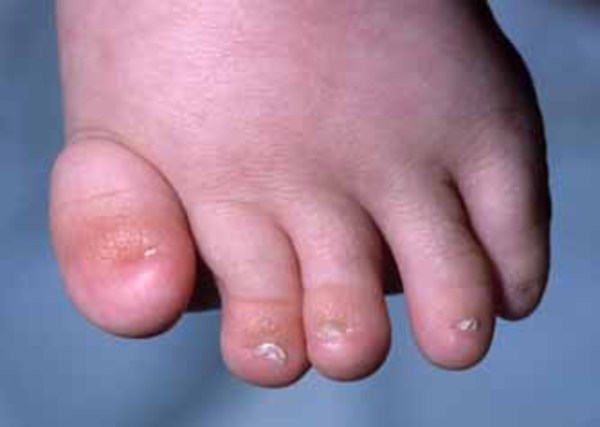Nail health is often overlooked in the broader conversation about personal well-being, yet it plays a significant role in our daily lives. Strong, healthy nails not only enhance aesthetic appeal but also reflect our overall health. While diet, lifestyle, and hygiene practices undeniably influence nail condition, genetics is a critical factor that can determine many aspects of nail health. This blog post delves into the role of genetics in nail health, exploring what you need to know to better understand and care for your nails.
Understanding Nail Anatomy
Before diving into genetics, it's essential to understand the basic anatomy of nails. Nails are composed of keratin, a type of protein also found in hair and skin. The nail unit includes several parts:
- Nail Plate: The hard, visible part of the nail.
- Nail Bed: The skin beneath the nail plate.
- Cuticle: The tissue that overlaps the nail plate and protects the new keratin cells as they form.
- Lunula: The white, crescent-shaped area at the base of the nail.
- Matrix: The part of the nail bed that extends beneath the cuticle and is responsible for producing new cells that make up the nail plate.
Genetics and Nail Structure
The genetic makeup of an individual significantly influences the structure and strength of their nails. Here are some genetic factors that play a crucial role:
Keratin Production
Keratin, the primary protein in nails, is produced by keratinocytes. The genes responsible for keratin production and the regulation of keratinocyte function can impact nail strength and growth. Variations in these genes can lead to differences in nail hardness, flexibility, and overall resilience.
Nail Growth Rate
The rate at which nails grow is also largely determined by genetics. On average, fingernails grow about 3 millimeters per month, while toenails grow more slowly. However, some people may experience faster or slower nail growth due to their genetic predisposition. This growth rate can be influenced by factors such as age, hormonal changes, and overall health, but the baseline rate is typically inherited.
Nail Shape and Thickness
The shape and thickness of nails are other traits influenced by genetics. Some people naturally have thicker or thinner nails, and the curvature or flatness of the nail plate can also vary. These characteristics are often passed down through generations.
Genetic Conditions Affecting Nail Health
Several genetic conditions can directly impact nail health, leading to abnormalities or increased susceptibility to damage. Understanding these conditions can help in diagnosing and managing nail-related issues.
Nail-Patella Syndrome
Nail-Patella Syndrome (NPS) is a genetic disorder that affects the nails, knees, elbows, and pelvis. It is caused by mutations in the LMX1B gene. Individuals with NPS often have nails that are abnormally shaped, discolored, or split. In severe cases, the nails may be missing entirely.
Pachyonychia Congenita
Pachyonychia Congenita is a rare genetic disorder characterized by thickened nails, painful calluses on the soles of the feet and palms, and cysts. Mutations in the genes KRT6A, KRT6B, KRT16, or KRT17 are responsible for this condition. The severity of nail thickening and other symptoms can vary, but the condition often leads to significant discomfort and disability.
Ectodermal Dysplasia
Ectodermal Dysplasia is a group of genetic disorders that affect the development of the skin, hair, nails, teeth, and sweat glands. There are many types of ectodermal dysplasia, each caused by different genetic mutations. Common nail abnormalities include brittle nails, thickened nails, or nails that are prone to splitting and breaking.
Genetic Predispositions and Common Nail Issues
Even in the absence of specific genetic disorders, certain genetic predispositions can make individuals more susceptible to common nail problems. Here are a few examples:
Brittle Nails
Brittle nails can result from a genetic predisposition to weak keratin structure. Individuals with this predisposition may find their nails are more likely to break, split, or peel, despite following good nail care practices.
Nail Psoriasis
Psoriasis is an autoimmune condition that can affect the skin and nails. While the exact cause of psoriasis is not fully understood, genetics play a significant role. If you have a family history of psoriasis, you are more likely to develop nail psoriasis, which can cause pitting, discoloration, and thickening of the nails.
Fungal Infections
Some individuals may have a genetic predisposition that makes them more susceptible to fungal nail infections (onychomycosis). This susceptibility could be due to variations in immune response genes, making it harder for their bodies to fight off the fungi that cause these infections.
Environmental and Lifestyle Factors
While genetics play a significant role in nail health, environmental and lifestyle factors also contribute to the condition of your nails. Here are some key factors to consider:
Nutrition
A balanced diet rich in vitamins and minerals is crucial for nail health. Nutrients such as biotin, vitamin E, iron, zinc, and protein support nail growth and strength. Genetic factors can influence how well your body absorbs and utilizes these nutrients, making it important to tailor your diet to your individual needs.
Hydration
Proper hydration is essential for maintaining the flexibility and strength of your nails. Dehydration can lead to dry, brittle nails that are prone to breaking. Your genetic makeup can affect how your body retains and utilizes water, highlighting the importance of staying adequately hydrated.
Nail Care Practices
Good nail care practices, such as regular trimming, filing, and moisturizing, are essential for maintaining healthy nails. Avoiding harsh chemicals, excessive manicures, and nail-biting can







0 Comments